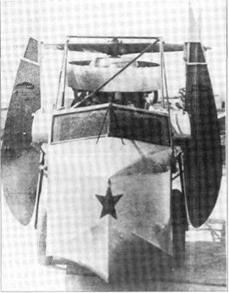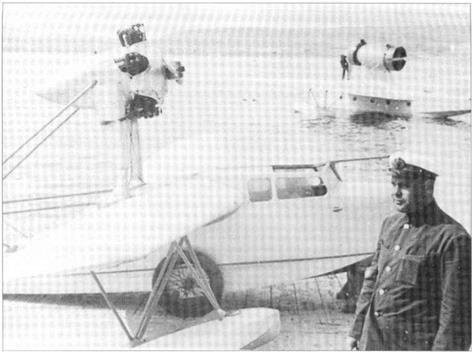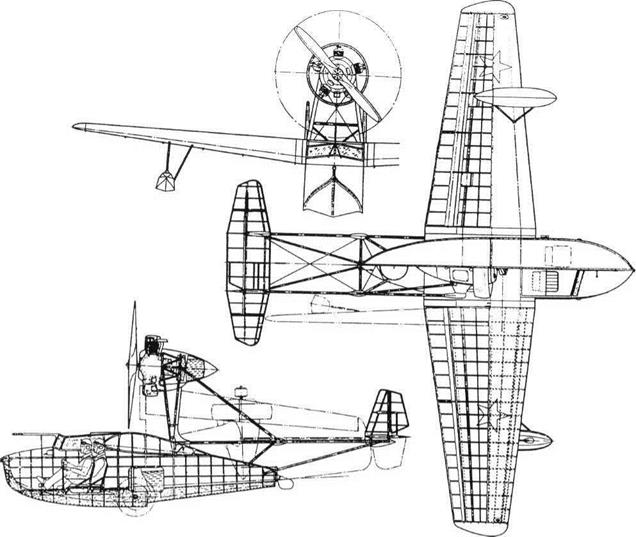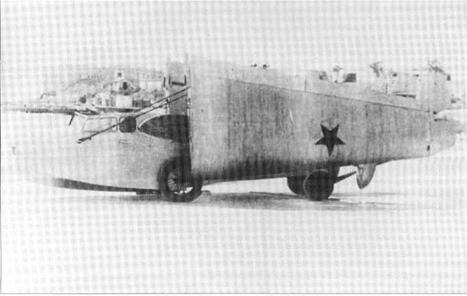Chetverikov SPL
Purpose: Reconnaissance from submarines. Design Bureau: Brigade of Ivan Vyacheslavovich Chetverikov in CAHI (TsAGI).
Later a famous designer of marine aircraft in his own right, Chetverikov was intrigued by the British submarine M-2, which carried a small aircraft for reconnaissance purposes. Though this proved a disaster in January 1932 when the M-2 was dived with the hangar door open, this did not invalidate the basic concept. Funds were obtained from both the MA (naval aviation) and the Glavsevmorput’ (ChiefAdministration ofPolar Aviation N orth – ern Sea Route). Accordingly Chetverikov designed a small monoplane in two forms: the OSGA-101 amphibian for Glavsevmorput’ for use from icebreakers and the SPL (Samolyot dlya Povodnikh Lodok, aeroplane for submarine boats), a slightly smaller non-amphibious
flying boat able to fold into a small hangar. OSGA flew in spring 1934. The SPL was completed in December 1934, taken by rail to Sevastopol and flown there by A V Krzhizhevskii in spring 1935. Testing was completed on 29th August 1935. Though the SPL was generally satisfactory, the idea of submarines with aircraft hangars was never adopted by the MA.
Like its predecessor, the SPL was a neat monoplane, of mainly wooden construction but with the tail made of Dl alloy covered with fabric and carried on booms of welded steel tube through which the control wires passed. The cockpit seated a pilot and observer side-by-side, and there was provision for a third seat or cargo immediately to the rear. The engine was a modest M-l 1 rated at l00hp, in a Townend-ring cowl and driving a two-blade wooden propeller. The wings were fitted with plain flaps, and could be un
locked and manually folded back with the upper surface facing outwards, the underwing floats also being hinged. The engine nacelle, on a steel-tube pylon, could likewise be pivoted straight back through 90°, so that after four minutes the whole aircraft could be pushed inside a watertight drum 7.45m (24ft 5Kin) long and 2.5m (8ft 21/2in) diameter (internal dimensions).
One report states that the MA claimed the SPL to have ‘inadequate seaworthiness’, while another states that it was difficult to take off from the open sea and was prone to stall because of poor longitudinal stability. The underlying factor was that the MA decided not to build large submarines with SPL hangars.

|
|
||||||||||||||||||||||||||||
|
||||||||||||||||||||||||||||
|













